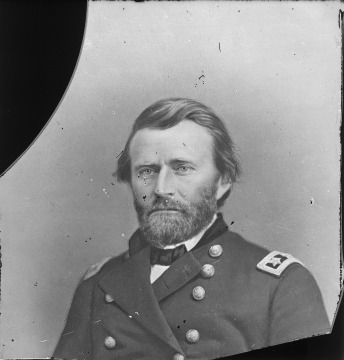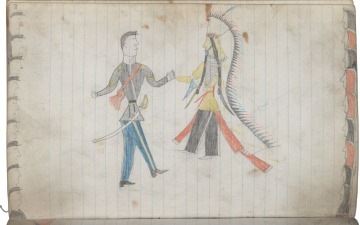1868: President Grant advances “Peace Policy” with tribes
President Ulysses S. Grant advances a “Peace Policy” to remove corrupt Indian agents, who supervise reservations, and replace them with Christian missionaries, whom he deems morally superior.
“In reality the [peace] policy rested on the belief that Americans had the right to dispossess Native peoples of their lands, take away freedoms, and send them to reservations, where missionaries would teach them how to farm, read and write, wear Euro-American clothing, and embrace Christianity. If Indians refused to move to reservations, they would be forced off their homelands by soldiers.” —Clifford Trafzer, ed., American Indians/ American Presidents: A History, 2009
- Theme
- Federal-Tribal Relations
- Region
- California, Great Basin, Great Plains, Northeast, Northwest Coast, Plateau, Southeast, Southwest
General Ulysses S. Grant, between 1869 and 1885
Courtesy National Archives and Records Administration
“Peace treaty with U.S. soldiers and their Indian allies before 1879,” ledger drawing by Little Skunk, 1879. Ledger art is a term for narrative drawing or painting on paper or cloth created by Native artists. Ledger art was created primarily from the 1860s to the 1930s, but also continues today. The term comes from the accounting ledger books that were a common source for paper for different Native artists during the late 19th century.
Courtesy National Anthropological Archives, Smithsonian Institution

